
The accuracy of the LeadTek GPS receiver as advertised as ± 5 meters. An investigation to assess this claim was conducted in El Cerrito, California on April 11, 2004. As can be seen by the figures below, the receiver ranges from being very accurate to very inaccurate.
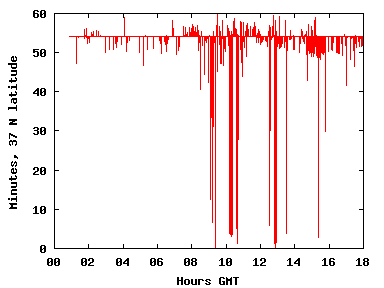
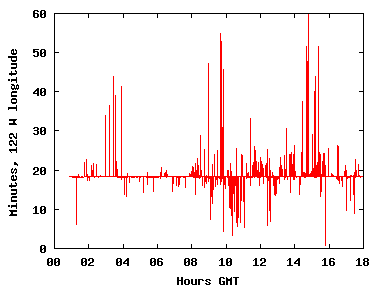
The preceding figures were produced using all of the data emitted from the GPS receiver. Statistics indicate that the mean and variance of the position is correlated with the number of satellites used to obtain the position fix. As the following table shows, 5 satellites is the realistically minimum number necessary to produce a fix within 5-10 meters of the actual location.
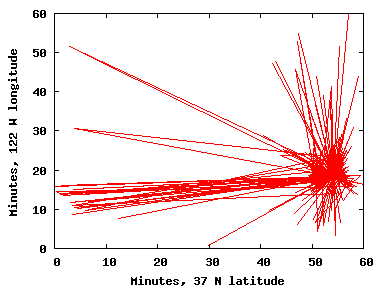
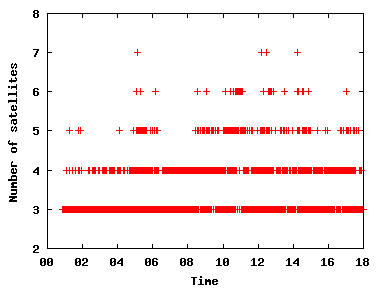
----------------------------- Mote Mean StdDev ============================= 1 (Lat) 37.9018 0.03113 1 (Long) 122.3042 0.04855 2 (Lat) 37.8992 0.10373 2 (Long) 122.2591 1.7530 =============================Table 1. Unfiltered GPS data from 2 motes 1 meter apart on an east-west line.
--------------------------------------------------------------------------------------------------- satellites | 3 | 4 | 5 --------------------------------------------------------------------------------------------------- Mote | Count Mean StdDev | Count Mean StdDev | Count Mean StdDev =================================================================================================== 1 (Lat) | 615 37.9018 0.03986 | 323 37.9028 0.004614 | 62 37.9029 6.085e-5 1 (Long) | 615 122.3042 0.06076 | 323 122.3025 0.01956 | 62 122.3045 7.441e-5 2 (Lat) | 678 37.8992 0.1412 | 397 37.9015 0.01290 | 147 37.9028 1.221e-3 2 (Long) | 678 122.2591 2.3919 | 397 122.3034 0.02113 | 147 122.3047 2.084e-3 ===================================================================================================Table 2. Statistics of GPS data arranged by number of satellites from 2 motes 1 meter apart on an east-west line. The means and standard deviations are in decimal degrees.
All GPS units require a certain amount of time to acquire 4 satellites, the minimum number needed for fixing a position (3 for space, 1 for time). Most GPS receivers implement tracking in a reduced power mode that enables fixes to be computed very rapidly when switched to a fully alert state. For the LeadTek 9546, test was performed to investigate the acquisition times necessary for a sequence of cold starts.
The tests were performed April 11, 2004 in El Cerrito California. A simple test code exercising only the GPS sensor was loaded onto Crossbow Mica2 mote. The mote was run for approximately 18 hours, indoors, with the GPS antenna located outside to enable satellite acquisition. The antenna had clear view of more than half the eastern hemisphere of the sky.
As can be seen from the results, acquisition times range from a few seconds to nearly 10 minutes to acquire 5 satellites, a practical minimum necessary to achieve the published accuracy of the device, ± 5 meters.
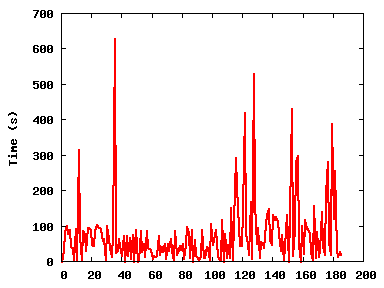
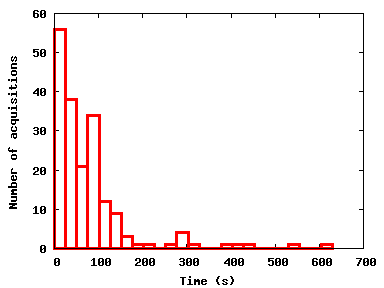
A series of tests were conducted to measure the following
Tests were performed with hardware that might be used in the wildlife setting:

Location accuracy and movement tracking were determined with the aid of GeoMapper Universal 1.3 software on the Fujitsu.
Several tests were conducted in different locations in order to determing the time required for the receiver to acquire three or more GPS satellites. Measurements were done on a clear morning in a sparsely wooded suburban environment.
For raw data, click here. The average cold-start time from 22 samples taken in various locations was between 51 and 52 seconds. Moreover, the following observations were made:
When the number of satellites is greater than three, the GPS estimatation was reliably within ten meters of the true location. In this regard, the Leadtek performed similar to other receivers of the same class.
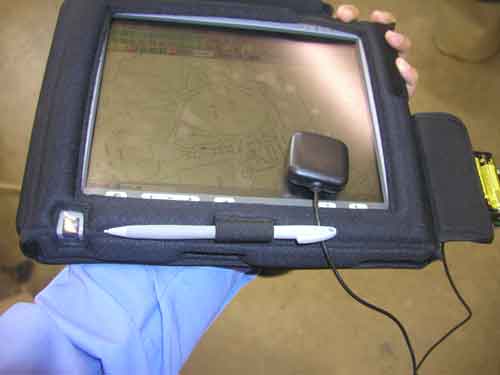
Lastly, a brief experiment was done to determine how well the receiver could track movement beyond the ten meter error. In particular, the GeoMapper software was used to see whether the GPS could follow a walk around Memorial Glade without lag. (Note: no pauses were taken during walks.)
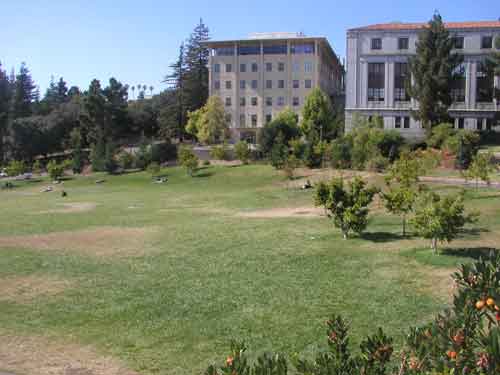
For a leisurely four minute walk, no lag was apparent. For a more brisk walk, a lag of about 2-3 seconds was seen. The GPS refresh rate was set at 1 Hz (note: blue markers in figure correspond to spots where a new GPS fix was gotten during the walk).
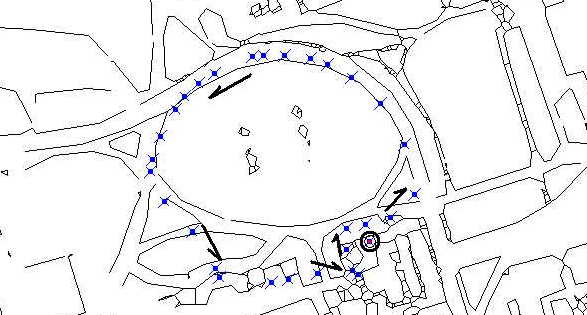
Last Updated: $Date: 2004/07/15 16:41:04 $ by $Author: doolin $.